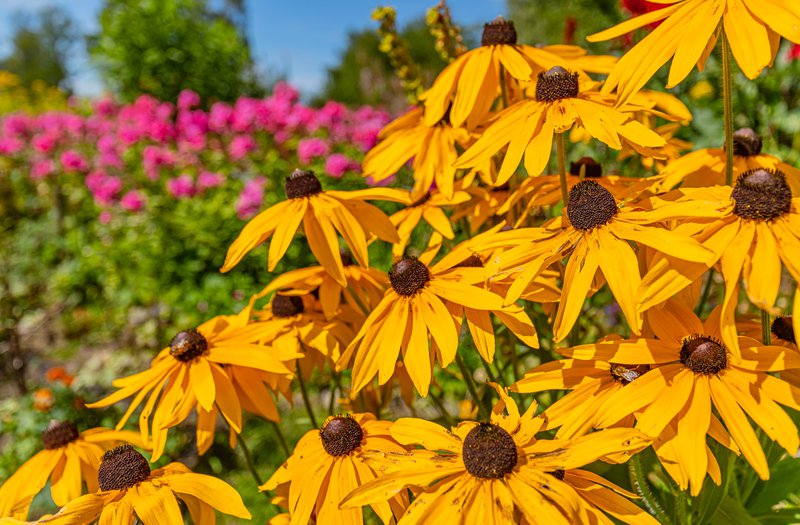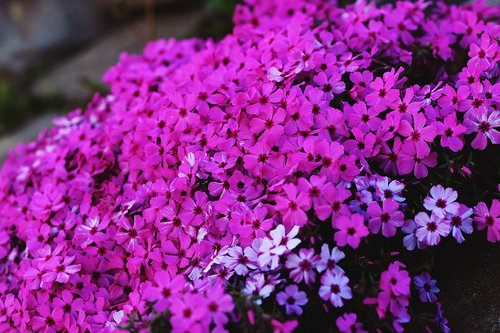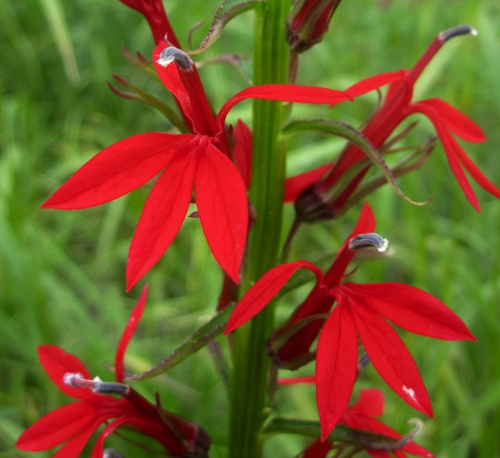
Can’t-Miss Spring Plant Color Combinations
Welcome the season with bright colors
Spring flowers are a hallmark of many homeowners’ landscape designs. Mixing and matching colorful flowers in your beds, borders and containers provides a sought-after look, but it can be overwhelming since there are so many options.
A landscape professional can help you select plants based on their color, growth habit and light requirements — in addition to those that perform particularly well in your geographic location. Plan early, working with your landscaper to select the color palette you desire, whether it’s for a few containers or your whole garden. Consider the following tips when finalizing your design.
Starting Considerations
Before you get started, review the following topics with your landscaper:
- Flexibility — Will you be starting from scratch or are you simply looking to add a few new colors to an existing garden?
- Existing colors — Think about which colors are already in your garden, including foliage and flowers, as well as containers, hardscapes and furnishings.
- Flower types — Do you prefer annuals, perennials or a mix of both? Consider using perennial plants as the heart of your design and supplement with short-lived annuals.

Create a Color Scheme
Selecting an overall color scheme doesn’t have to be complicated. A simple rule of thumb is to choose a “temperature” of either warm colors (reds, oranges or yellows) or cool colors (blues, purples or greens) and then add some neutral colors like white, ivory or blush.
Here are some tips for several common garden colors:
- Red — Red makes a bold statement. Flowers like hibiscus, salvia and geranium love full sun, so they can be mixed and matched. To prevent an all-red garden from becoming overpowering, add some pale yellow or white accent plants.
- Blue and purple — These cool, soothing colors blend well with almost any other flower color, particularly those with white, pink or yellow blooms. Consider ageratum, delphinium and perennial geranium.
- Orange — While orange is a strong color, it’s great for creating appealing combinations, especially when paired with blue or yellow flowers. Try calendula, butterfly weed and gazania.
- White — White blooms can be paired with every other color, and bring a cool contrast to brighter blooms in all seasons. Consider sweet alyssum, petunia and Nippon daisy.
- Pink — Pink flowers offer a wide range of hues, from soft pastels to vibrant fuchsia. They make ideal partners for blue, white or yellow bloomers. Try cosmos, bleeding heart and dianthus.

Add a Pop of Color
Especially in spring, most garden leaves are green. However, a whole swath of green leaves can create a monochromatic display. Since hot colors are rare in the beginning of the growing period, adding one into a mix of like-colored cool tones commands attention. Try one of the red, orange or vibrant pink suggestions listed above.
Intensify Pastels With Bolder Hues
Pairing light colors with more intensely pigmented — but related — hues prevents a combination from looking washed out. For example, a sea of pink blooms in pastel shades can be enhanced by a sprinkling of vibrant fuschia, all while keeping the same color palette. This provides points of interest throughout your landscape design.
Add Visual Interest With Foliage
Blooms aren’t the only way to add color to your garden; the textures and colors of foliage can add just as much visual interest. Choose plants that hold onto their leaves year-round, but push out new growth in the spring to make them appear fresh and vivid. Examples include barberry, false cypress and daphne.

Native Plants for Northern Virginia
Native plants naturally resist pests and diseases, in addition to requiring less water than non-native species. Northern Virginia is home to many colorful native options that you can incorporate in your spring landscaping combinations, including:
- Trees — serviceberry, eastern redbud, flowering dogwood and sweetbay magnolia
- Shrubs — summersweet, Virginia sweetspire, beautyberry, munchkin oakleaf Hydrangea and red twig dogwood
- Perennial flowers — thread-leaf blue star, tickseed, coral bells and black-eyed Susan
While not considered native plants, there are several annual flowers that thrive in Northern Virginia gardens. These include petunia, alyssum, dahlia, zinnia, pansy, marigold, begonia, celosia, viola and impatiens.
The experts at Rossen Landscape would love to help you add some color to your yard. Check out our seasonal flower display gallery or contact us to learn more.





